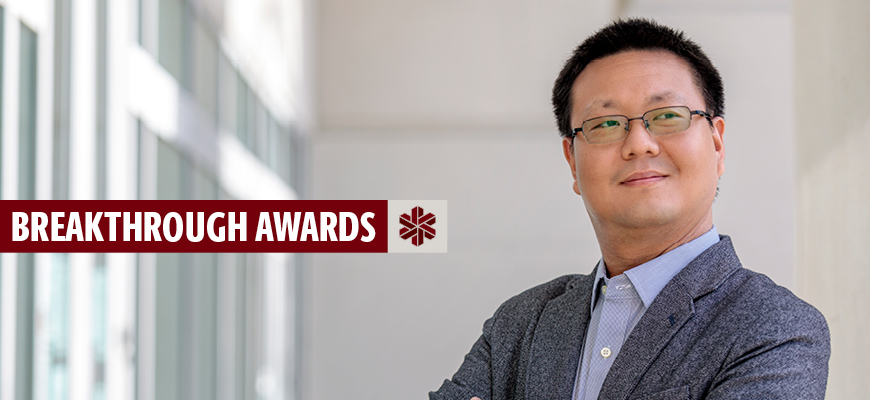
Breakthrough Star: Yu Qian
Civil engineering prof applying AI and computer vision to improve rail safety
Posted on: July 18, 2022; Updated on: July 18, 2022
By Chris Horn, [email protected], 803-777-3687
It’s one thing to be late for a haircut because of a crossing train. But when Yu Qian spotted an ambulance with lights flashing and siren blaring — but blocked by a train — he put his civil engineering expertise to work.
Qian joined the civil and environmental engineering department faculty in 2017, and in that relatively short time has published dozens of research papers and successfully competed for more than $2 million in research funding, much of it focused on railroad operation and infrastructure improvements. One of Qian’s first projects focused on the challenge of first-responder vehicles stuck in train traffic.
“We surveyed responders to identify several locations where the problem most often occurs in the Columbia area,” Qian says. “Then we developed a system that uses computer vision to monitor street traffic conditions and got operational information from the railroads to better estimate train crossing times and potential delays. A 911 dispatcher can use that information for better route selection to save critical time on an emergency call.”
The basic infrastructure of railroads seems simple — railroad ties, spikes and ballast — but as I delved into that research, the more I realized how complex the entire system is.
Yu Qian
Qian’s team is also developing tailored artificial intelligence models for the computer vision system to monitor railroad crossings and platforms to spot individuals with potentially suicidal intentions.
“Railroads have so many crossings that all can’t be humanly monitored,” Qian says. “This system uses AI to spot stationary vehicles or unusual behaviors within the crossing, such as someone intentionally parking a vehicle on the tracks or sitting on the tracks. The image could be transmitted to the railroad or law enforcement so they can make a preventive decision.”
Qian is also using computer vision and drones to develop an autonomous track inspection system for scanning tracks to detect any missing or broken components. By improving the efficiency of track inspection, railroads can better maintain the service quality of their tracks and improve operation safety and transport speed.
Qian’s fascination with trains began in childhood but picked up steam during his Ph.D. program at Illinois where he became immersed in a railroad research project.
“The basic infrastructure of railroads seems simple — railroad ties, spikes and ballast — but as I delved into that research, the more I realized how complex the entire system is. There is much more to discover from an engineering perspective,” he says.
Improving the safety and efficiency of railroads is in the national interest, Qian says, because that mode of transport is vital in moving up to 40 percent of goods across the country. “We think about transportation as consumers, where the last mile is delivered by truck,” Qian says. “but for many goods imported from Asia and Europe, they actually arrive first at a port and are first transported toward their destination by rail.”